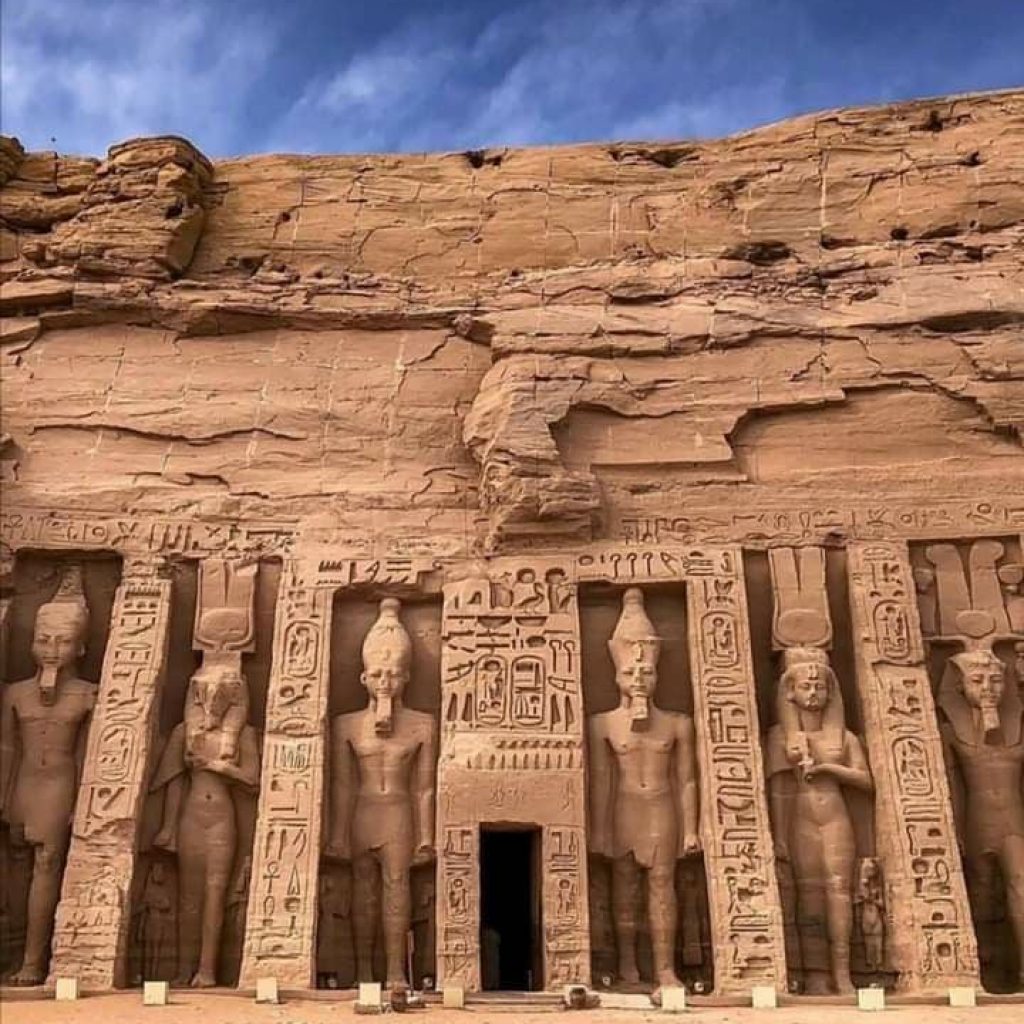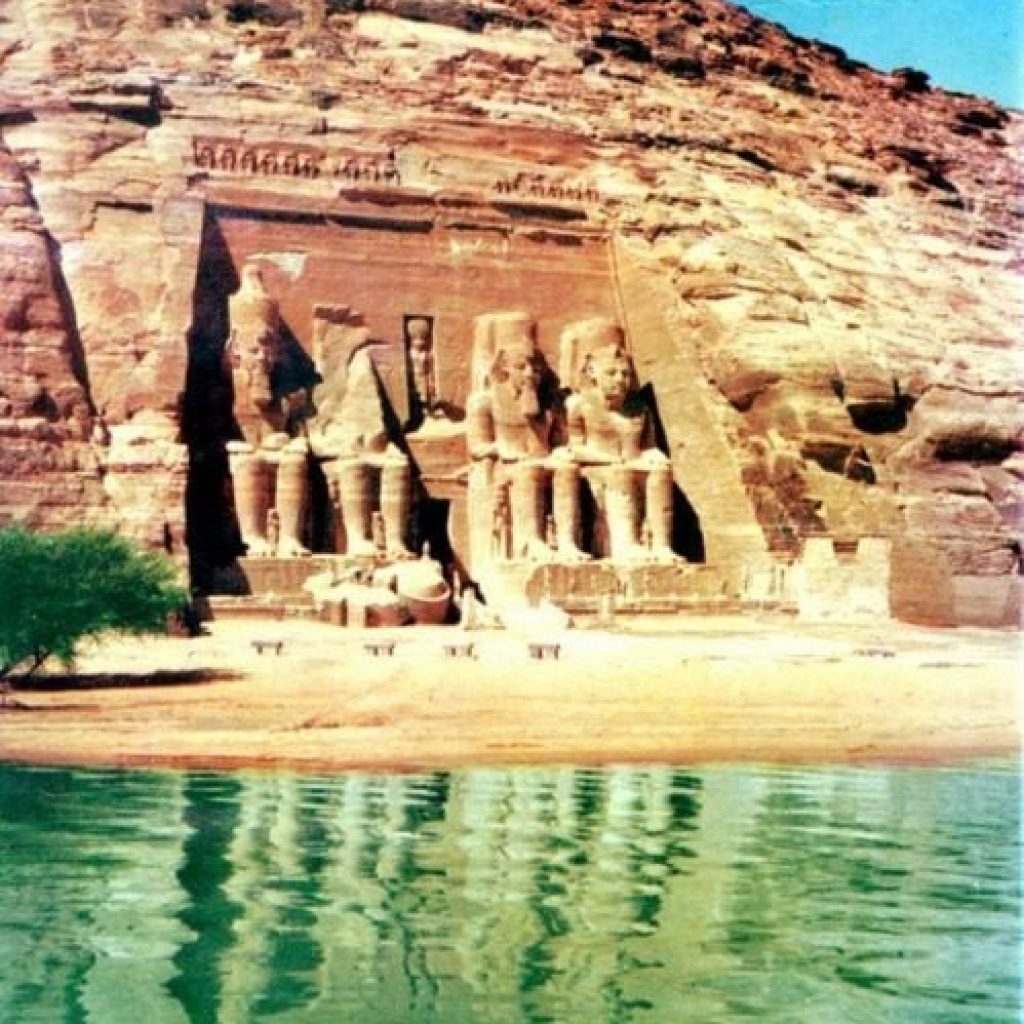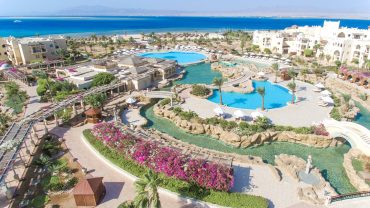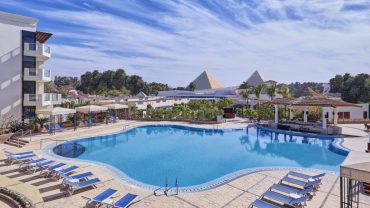
The temples of Abu Simbel are considered one of the most important tourist attractions in Aswan. The temples are currently west of Lake Nasser, the largest artificial lake in the world, but that was not the original site of the temples, as the Nile River flooded that site after diverting the river during the construction of the High Dam. UNESCO supported the countries of the world in the direction of these temples in the direction of the present West.
These temples were built by King Ramses II in 1244 BC, the great temple of him, and topped by 4 huge statues of the king, and its age represents the king’s sons, his wife, and his mother. Tourism in the face of the King’s statue in the Holy of Holies Tourism on the King’s birthday and the day of his coronation on the throne.
As for the small temple, it is dedicated to Queen Nefertari, the wife of King Ramses, and to the worship of the gods, and its design is similar to the design of the large temple. The network of these temples is a picture of the greatness of the ancient Egyptians and their abilities in design and implementation, a masterful engineering that remains a mystery that baffles scholars until now.
the world-famed temples will take your breath away. After a visit to this inspiring site, you can walk around the colourful touristic market, go bird watching on the Lake Nasser, and get back to the temples again in the evening for the amazingly inspiring sound & light show. Staying in Abu-Simbel for a night or two will allow you to enjoy the peace and magic of this Nubian town at your own pace and discover the true spirit of Abu-Simbel, gaze at the magnificent statues for hours and avoid the hordes of tourists arriving usually in the early morning. You’ll also get a glimpse of the hearty Nubian culture by listening to Nubian music, meeting with the locals, and maybe even escaping to the nearby desert for some more inspiring experiences.





Comment (0)